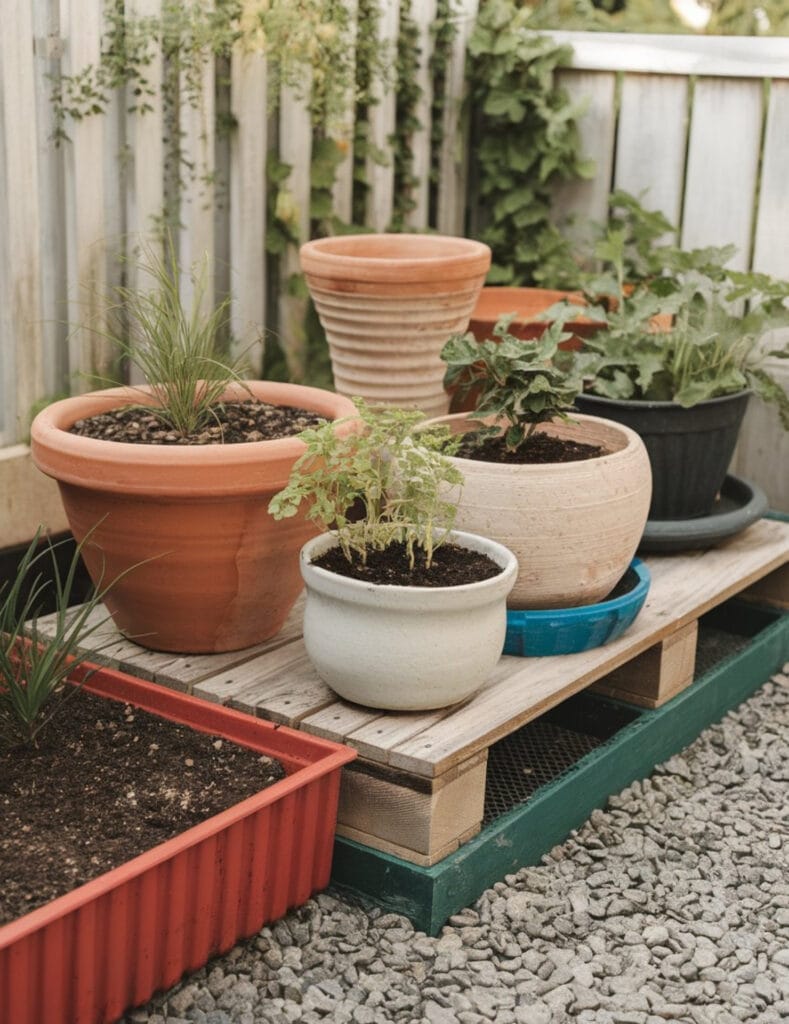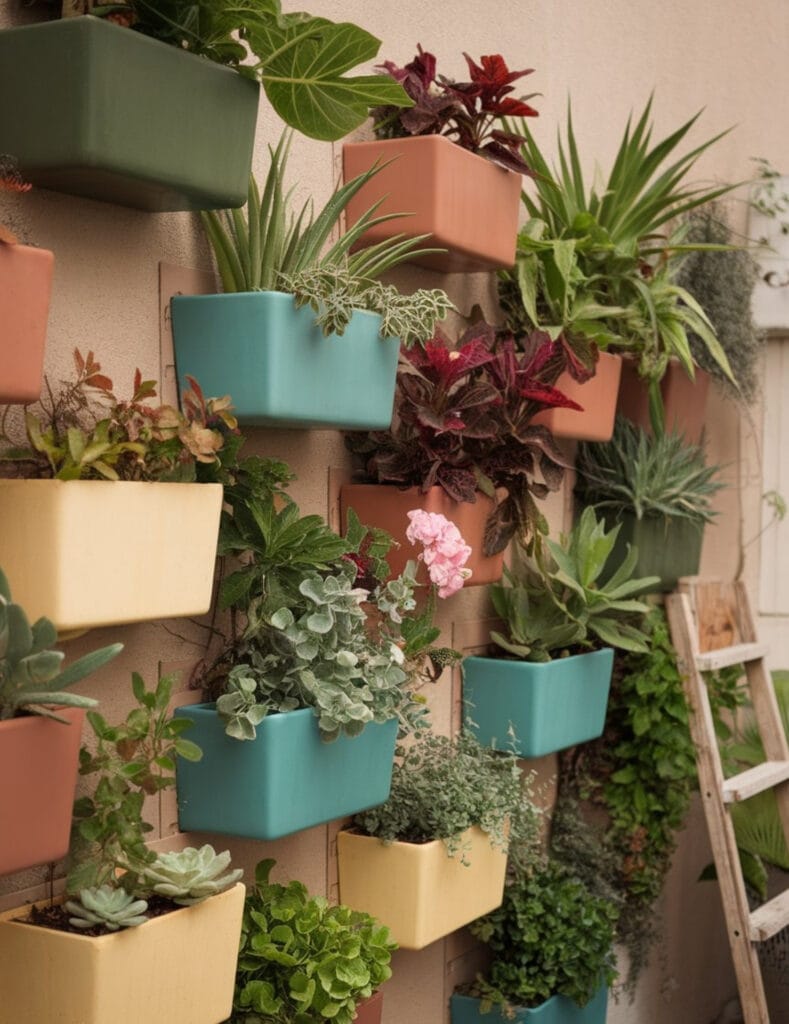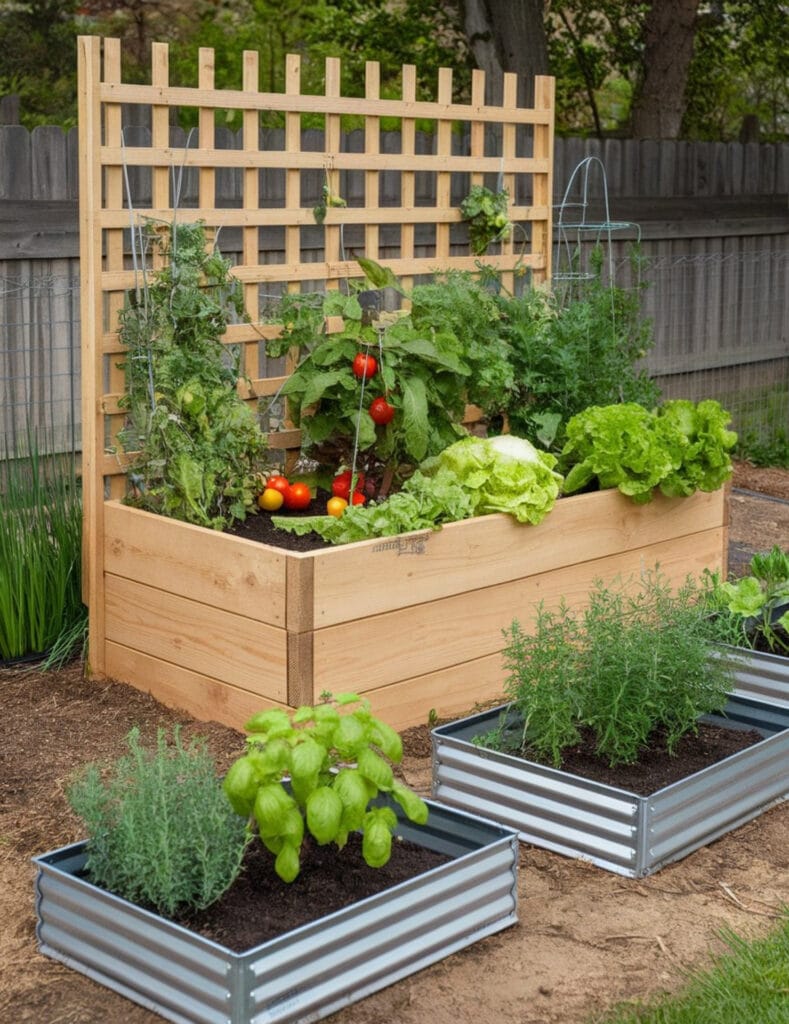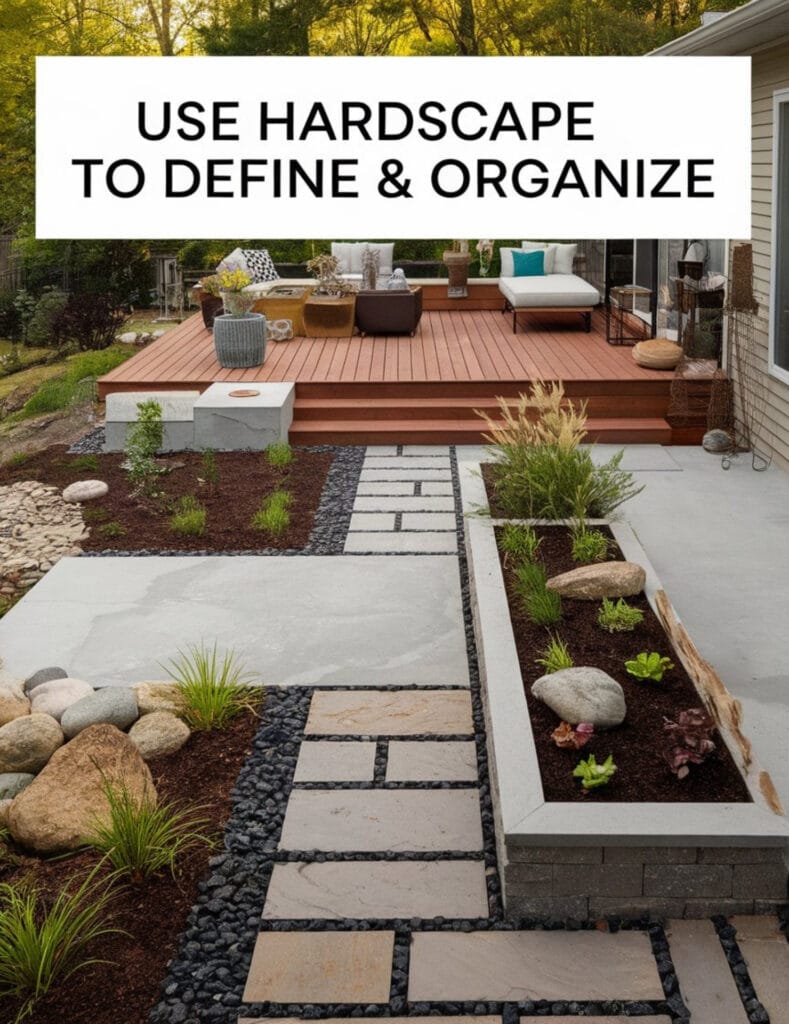This post may contain affiliate links, meaning I may receive a commission from purchases made through links. Learn more on my privacy policy page and disclaimer page
When space is limited, every square foot counts. But small doesn’t mean boring. With smart design and creative techniques, you can turn even a tiny backyard or balcony into a lush, relaxing, and productive garden space.
According to many garden design sources, raised beds, container gardens, vertical planting, and clever layout tricks are among the best tools to maximize greenery in small areas.
Below are several ideas you can mix, match, adapt — and start with minimal cost and effort.

1. Container & Pot Gardening
One of the easiest ways to garden in tight quarters is to use containers. Boxes, pots, tubs, and even repurposed items (like buckets or wooden crates) can become planters.
- Choose containers with good drainage.
- Use lightweight soil mixes (so the pots are easier to move).
- Stick to compact or dwarf plant varieties suited to containers.
- You can even grow edibles like herbs, lettuce, or small tomato varieties in pots. Good Housekeeping+2HGTV+2
Tips:
- Group pots together to create a cohesive mini-garden.
- Use decorative containers to add visual interest.
- Place the largest pots at the back or corners, with trailing or smaller ones in front.

2. Vertical Gardening & Wall Planters
When floor space is limited, go vertical.
- Mount wall planters or pocket planters on fences or walls.
- Use trellises, wire mesh, or netting for climbing plants.
- Hang planter boxes off railings.
- Use tiered shelving, ladder shelves, or plant stands.
This approach frees up ground space while filling walls with greenery, softening hard edges, and boosting visual appeal. Better Homes & Gardens+1
Example plants for vertical gardens:
- Vines (e.g. clematis, jasmine, morning glory)
- Ephemeral herbs like mint, thyme, parsley
- Smaller vegetables (e.g. cherry tomatoes, beans)
- Succulents in wall-mounted pockets

3. Raised Beds & Mini Garden Beds
If your backyard (or balcony floor) allows, small raised beds help define planting zones, improve drainage, and make gardening easier.
- Use shallow raised beds or narrow boxes.
- Consider “keyhole garden” or “herb spiral” layouts for maximum yield in a compact footprint. Wikipedia+1
- Divide beds into square-foot gardening modules so each square is manageable. Wikipedia
Benefits:
- Easier access (less bending)
- Better soil control
- More productive planting
Even a small 3′ × 3′ raised box can grow a surprising amount of herbs or salad greens.

4. Use Hardscape to Define & Organize
In a small outdoor space, pathways, gravel areas, stepping stones, or pavers help break up the garden visually and functionally. They also minimize weeding and maintenance. Better Homes & Gardens+2HGTV+2
Tips:
- Use gravel or crushed stone in low-traffic spots.
- Use narrow stepping stones or slabs rather than large paved areas.
- Consider decorative mulch or groundcover plants between stones.
- A focal patio or sitting area helps define your outdoor “room.”
5. Seating, Shade & Ambiance
Garden isn’t just about plants — it’s also about enjoying the space.
- Place a small bistro table and chairs or a cozy bench in a corner.
- Use shade cloths, umbrellas, or a pergola to soften harsh sun.
- String lights, lanterns, or solar lighting add ambiance for evenings. Good Housekeeping+2HGTV+2
- Use mirrors or reflective surfaces to visually expand the area.
6. Plant Selection for Small Spaces
Choosing the right plants is key. Some plants are better suited to confined areas:
- Compact shrubs or dwarf trees
- Ornamental grasses
- Perennials with controlled spread
- Edible plants with compact growth
- Low-maintenance and drought-tolerant species
One guide cites Bobo hydrangea, Carex, and compact coral bells as good choices for small backyards. Homes and Gardens
Also, use layering: taller plants in back, medium in middle, low groundcover in front.
7. Maintenance Tips & Tricks
- Water efficiently (drip irrigation or self-watering containers help).
- Mulch to reduce weeds and retain moisture.
- Prune and trim regularly to keep things under control.
- Use seasonally rotating plants to keep color and interest year-round.
- Combine perennials with annuals for flexibility.
- Keep tools, fertilizer, and supplies stored neatly (a box or small shed even in a corner helps).
Sample Layout Ideas
Here are two simple layout ideas you can adapt:
| Layout | Description |
|---|---|
| “Green Wall + Pots” | A vertical garden along one wall, with a line of larger pots along an edge and a small bistro set in the middle. |
| “Pathway + Raised Beds” | A narrow stepping-stone path divides two raised beds; a bench or seating area lies at the end. |
Sketch your space and try positioning plants and furniture before you commit.
Final Thoughts
Small outdoor spaces can still be lush, vibrant, and personally meaningful. Start small, pick your favorite ideas above, and gradually build out your garden. With containers, vertical planting, smart layouts, and the right plants, you can transform your balcony or compact backyard into a cozy green escape.
If you like, I can help you generate a custom layout for your backyard or balcony (share dimensions) — or suggest specific plants suited to your climate. Would you like me to do that?





